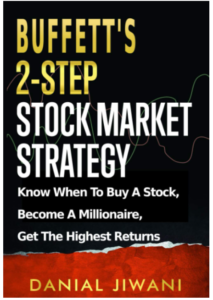2.4.3 Taxable Brokerage Account
"A taxable brokerage account is your financial playground—invest in your dreams, one trade at a time."
Why have a Taxable Brokerage Account?
The world of taxable brokerage accounts is the financial playground where you get to flex your investment muscles without waiting for retirement. Think of a taxable brokerage account as your personal financial sandbox, where you can build castles out of stocks, bonds, and mutual funds, knock them down, and rebuild them as often as you like. It’s like having a toy box where you get to choose from an endless array of investment “toys”—from the safe and steady blue-chip stocks to the high-flying tech companies that give you a thrill with every market swing.
One of the greatest benefits of a taxable brokerage account is its sheer flexibility. Imagine you’re at an all-you-can-eat investment buffet. Want a bit of international exposure? Grab a plate of emerging market stocks. Craving some income? Pile on the dividend-paying bonds. With no contribution limits or withdrawal restrictions, you can sample as much as you like, whenever you like. It’s the ultimate smorgasbord for your portfolio, and you don’t have to worry about any stuffy rules telling you how much you can “eat.”
But let’s not forget the liquidity! Need some cash to fix that leaky roof or perhaps fund a spontaneous trip to the Bahamas? No problem. With a taxable brokerage account, you can sell your investments and have the money in your account faster than you can say “piña colada.” Sure, you might have to pay capital gains tax, but that’s a small price for the freedom to access your funds whenever life throws a curveball. It’s like having a financial Swiss Army knife—always handy, always ready to be deployed in any situation.
In short, a taxable brokerage account is the Swiss Army knife of investment tools. It’s versatile, flexible, and ready to help you navigate the ups and downs of the financial markets. So grab your metaphorical ticket, step right up, and enjoy the ride—because with a brokerage account, the possibilities are endless, and the fun never stops.
"A taxable brokerage account offers the liquidity and flexibility that makes it a cornerstone of a balanced investment strategy."
Guide to Investing in a Taxable Brokerage Account
Investing in a taxable brokerage account is a straightforward process. Here’s a step-by-step guide to help you get started:
Step 1: Choose a Brokerage Firm
- Research Options: Compare different brokerage firms based on fees, services, and investment options.
- Consider the Platform: Look for an easy-to-use platform that offers the tools and resources you need.
Step 2: Open a Brokerage Account
- Gather Information: Have your personal information ready, such as your Social Security number, employment details, and bank account information.
- Complete the Application: Fill out the online application or visit a branch. Provide the necessary documentation as requested.
Step 3: Fund Your Account
- Initial Deposit: Transfer funds from your bank account to your brokerage account. This can typically be done via electronic funds transfer (EFT), wire transfer, or check.
- Set Up Recurring Deposits: Consider setting up automatic deposits to regularly fund your account.
Step 4: Develop an Investment Strategy
- Assess Your Goals: Determine your financial goals, risk tolerance, and investment horizon.
- Create a Plan: Decide on an asset allocation that aligns with your goals (e.g., a mix of stocks, bonds, mutual funds, and ETFs).
Step 5: Choose Your Investments
- Research Options: Look into different types of investments such as individual stocks, bonds, mutual funds, and ETFs.
- Diversify: Spread your investments across different asset classes to reduce risk.
Step 6: Make Your Investments
- Place Orders: Use your brokerage platform to buy the investments you’ve chosen. You can place market orders (buy/sell at the current price) or limit orders (buy/sell at a specific price).
- Review Confirmations: Check the confirmation of your trades to ensure everything is correct.
Step 7: Monitor and Manage Your Portfolio
- Regular Reviews: Periodically review your investment performance and make adjustments as needed.
- Rebalance: Adjust your portfolio periodically to maintain your desired asset allocation.
- Stay Informed: Keep up with financial news and market trends to make informed decisions.
Step 8: Tax Considerations
- Understand Tax Implications: Be aware that you’ll owe taxes on any dividends, interest, and capital gains. Keep track of your transactions for tax reporting.
- Use Tax-Advantaged Strategies: Consider tax-loss harvesting to offset gains with losses and maximize your after-tax returns.
Step 9: Stay Consistent
- Regular Contributions: Continue adding to your account regularly to build your investments over time.
- Long-Term Perspective: Stay focused on your long-term goals and avoid reacting to short-term market fluctuations.
Step 10: Seek Professional Advice
- Consult a Financial Advisor: If you need help developing an investment strategy or managing your portfolio, consider seeking advice from a financial advisor.
By following these steps, you can effectively invest in a taxable brokerage account and work towards achieving your financial goals.
Buffett’s 2-Step Stock Market Strategy: Know When to Buy A Stock, Become a Millionaire, Get The Highest Returns Paperback – August 21, 2020 by Danial Jiwani (Author)

Warren Buffett is one of the best investors of all time. But what is his strategy? Buffett’s 2-Step Stock Market Strategy breaks down Buffett’s 2-step strategy and compiles his best investing principles so that you can replicate his strategy when you invest in stocks.
Buffett’s 2-Step Stock Market Strategy will teach you when Buffett buys and sells, what he looks for when researching a stock, and the biggest mistakes that beginners make when trying to replicate his strategy.
Danial Jiwani (the author) has seen some people lose over $100,000 in a stock because they did not properly understand Warren Buffett’s strategy.